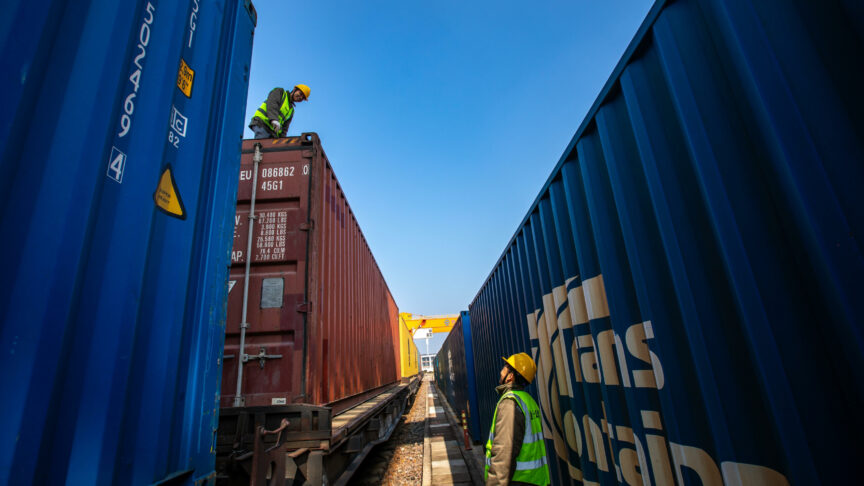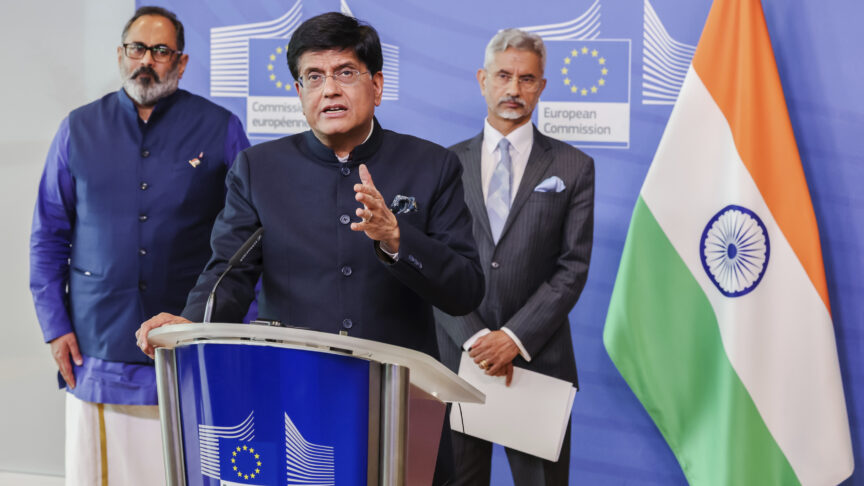Asia’s security dilemma
A tension between the need for robust deterrence and the risk of escalation leads to almost impossible choices for Asians
The spectre of war hangs over Asia. On a recent ECFR study trip to Tokyo, we were told that Japan was already fighting a “grey zone conflict” with China. We heard about how Japan Air Self-Defense Force fighters are regularly scrambled to respond Chinese PLA Air Force incursions around the Japanese-occupied Senkaku islands, which China calls the Diaoyu and also claims for itself, and about how China uses “armed fishermen” to incrementally acquire and consolidate territory in the East and South China Sea. Such situations “could lead to a military clash at any moment”, one of our Japanese interlocutors told us.
In this context, many analysts emphasise the need for robust deterrence and greater security co-operation in order to hedge against China, which has been increasing defence spending at an extraordinary rate over the last decade (though analysts disagree about what the figures mean in terms of military capabilities). As China has become more assertive since 2010, a number of Asian countries have already begun thickening their security ties. Since World War II, security in Asia has been based on a hub-and-spoke system centred on the United States. But as one of the participants put it, “the spokes are increasingly linking up”. In particular, while we were in Tokyo, there was much discussion of an increasingly close relationship between India and Japan.
At the same time, however, there was also a sense from some of our interlocutors in Tokyo that such increased security co-operation, for example between India and Japan, could actually be counter-productive. The danger is that the strengthening of security ties could lead to a perception of the coalescence of an anti-China coalition, which might strengthen the Chinese fear of encirclement and in turn lead China to further develop its military capabilities – and perhaps even alliances of its own – in response.
In order to avoid such a spiral, much security co-operation within Asia tends to be low-key: the countries involved do not talk up what they are doing and endlessly emphasise that they have no intention of “containing” China or preventing or slowing its rise. But this approach itself often leads to accusations of a lack of transparency.
In other words, Asians find themselves between a rock and a hard place: on the one hand, they see a real need for robust deterrence and clear messaging; on the other hand, they fear that deterrence could itself lead to escalation. This tension leads to difficult, almost impossible choices – above all about security guarantees. Do security guarantees – and in particular the US security guarantee to Asian countries such as Japan – help prevent war or make it more likely?
Several Japanese interlocutors criticised the “confused and confusing” messaging from President Barack Obama – for example in his West Point speech, which hardly mentioned Asia – and called for greater clarity from the US about its commitment to Asia in general and to Japan in particular. On the other hand, on his trip to Asia in April, Obama did make it absolutely clear that Article 5 of the Japan-US Security Treaty “covers all territories under Japan’s administration, including the Senkaku Islands.” But will this moderate Chinese behaviour (some Japanese participants said it was already doing so) or just make it more likely that the US could be dragged into a conflict between China and Japan?
At a first glance, the dynamic in Asia sounds like what realist international relations theorists call a security dilemma – the situation in which, in order to enhance their own security in an anarchic environment, in particular by increasing their military capabilities or forming alliances, states inadvertently threaten other states, which in turn seek to enhance their own security, and so on. One of the paradigmatic cases of the security dilemma in international relations is the one created by Germany’s rise at the end of nineteenth century – which is partly why many analysts such as Aaron Friedberg see parallels between Europe’s past – in particular the great power competition that culminated in World War I – and Asia’s future. But other analysts claim that Asia is so different from Europe that such historical (or geographical) analogies are misleading.
The crucial question, it therefore seemed to me as I listened the discussions we had in Tokyo, is: is the situation in Asia today a classic security dilemma? Or is there something about it that makes it different from previous cases such as that in Europe 100 years ago? If it is a classic security dilemma, how do we know which steps will deter China and which will simply increase its sense of encirclement and thus make war more likely? What lessons from previous cases of the security dilemma, if any, can be applied in Asia today? In particular, how should states signal their intentions to each other in order to avoid the self-fulfilling dynamic that led to World War I?
These issues are relevant not just for Asians but for Europeans as well. The key question for Europe is whether it should it aim to go beyond neutrality and play a more active role in Asian security – as some of our interlocutors, particularly from Japan, encouraged it to. While some EU member states such as France and the UK are quietly increasing security co-operation with Asian countries and above all with Japan (as François Godement showed in his recent brief on France’s “pivot” to Asia) – and thus may to some extent become part of the anti-China coalition that seems to be coalescing, other EU member states are horrified about the possibility of taking sides in this way. Thus there is a real danger of a big European split over Asian security. But before Europeans can unite around a coherent policy, they will have to agree on a common understanding of Asia’s security dilemma.
The European Council on Foreign Relations does not take collective positions. ECFR publications only represent the views of their individual authors.


